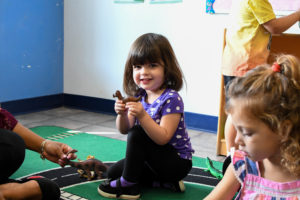
Executive Functioning: Developing Learning Skills
Creative world school Dec 22, 2017As we set young learners on a trajectory for success, it is important to monitor their development in quantifiable ways. One of the key skill sets we observe and encourage growth in is Executive Functioning. These skills, used by adults and children every day, include impulse control, following multi-step directions, focusing on a task, and multitasking.

Studies have shown that three key areas of Executive Function that best promote early learning and school readiness are,
Inhibitory memory, which refers to the ability to remember to not do something (for example, not going out of turn when playing a game);
Cognitive flexibility, which is the ability to change actions and behaviors as the need arises (for example, adapting to a new dramatic play scenario)
Working memory, which is the ability to keep information in mind in order to carry out a task (for example, following multiple steps of the cleanup routine).*
We structure our routines to model and incorporate these Executive Functions. As a parent, there are many ways that you can coach your child in these areas.
- Anticipate scenarios where a child will have to NOT do something, maybe at a friend’s party where the rules are different than at home. Talk through what you will and won’t do. Coach your child through the in-the-moment decision making and reflect on your experience afterward!
- Play pretend! And when you are deep in make-believe, introduce new elements: new props or a new story line for your characters. Encourage and stretch your child’s imagination.
- Practice giving your child longer and more complex directions. Can they follow two steps before forgetting what they were supposed to do? Expand your child’s recall by encouraging multi-step actions.
Want your child to get in on the best Early Education has to offer? Visit us online or follow us on facebook/twitter/Pinterest to learn more!
*Blair, C. (2002). School readiness: Integrating cognition and emotion in neurobiological conceptualization of child functioning at school entry. American Psychologist, 57(2), 111– 127.






